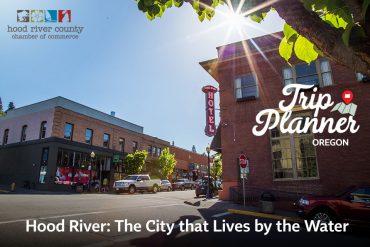In 1973, the Oregon Legislature established the Oregon Land Use Act, under which all cities and counties were required to implement statewide planning goals. Measure 37, passed in 2004, was a partial rebuke to statewide planning. Measure 49, passed in 2007, effectively countermanded Measure 37. The debate continues. Are Oregon’s land-use laws a public good or an infringement on personal property rights?
Dave Hunnicutt
President, Oregonians in Action (oia.org)
Both. Any system of zoning and planning is going to simultaneously provide public benefits and infringe upon the rights of private property owners. The question is how to strike a proper balance between these competing interests.
In terms of finding that elusive balance, Oregon’s controversial and unique land-use system has performed poorly.
In 1973, the Oregon legislature vested control over zoning and planning in a single state agency, the Land Conservation and Development Commission (LCDC). Concentrating the power for planning and zoning decisions in one agency at the state level is unique to Oregon. Planning throughout the rest of the country occurs at the local level, reflecting the characteristics of each individual community and region.
The result is an Oregon system of regulations that is difficult to change, slow to respond and overly uniform. This doesn’t work in a state as geographically and economically diverse as Oregon. A rancher with a large ranch in Grant County needs different regulations than a husband and wife with ten acres just outside Portland. In most cases, however, the regulations are identical.
Likewise, re-drawing an urban growth boundary in a large growing city should involve much different considerations than with a slow-growing community. In each case, both communities are bound by the same set of state laws, which can only be changed by the legislature or LCDC.
This lack of flexibility and the application of one-size-fits-all regulations makes it difficult to strike the balance between the rights of the property owner and the desires of the public. Oregon would be wise to rejoin the other states and return control of planning and zoning decisions to local government, with more limited state oversight for areas of critical state concern.
Kevin Gorman
Executive Director, Friends of the Columbia Gorge (gorgefriends.org)
When Measure 37 was put on the ballot in 2004, it was the ideology of property-rights infringement that stoked the passion of its proponents. They wisely put aside their ideology, however, and made the case that Measure 37 was about fair compensation for reduced property values. Unfortunately, fair-minded Oregonians supported that compensation argument without getting the full story.
Both the compensation and the infringement arguments harbored by Measure 37 proponents are built on a house, or rather subdivision, of cards. In 2007, the American Lands Institute published an analysis that proved that Oregon’s rural landowners have been well compensated as a result of the land-use laws. From 1974 – 2004, Oregon’s rural landowners reaped nearly $4.9 billion in property tax reductions. One of the biggest investments ever made by Oregon taxpayers went almost unnoticed because it was funded by so many residents with small property tax increases and redistributed to farmers and timber operators. Despite the fact that these subsidies were provided to offset potential property value losses, Willamette Valley farmland values outperformed the S&P 500 during the forty-year period studied.
As for the argument that Oregon’s land-use laws infringe on property rights, most Oregonians long ago dismissed the notion that anyone has the right to do whatever they want with their land. Oregon’s land-use laws saved Oregon farms from becoming a relic of the past. Today the farm industry generates more than $4 billion in sales annually. The same land-use laws, applied in Washington’s wine growing region of Klickitat County, saved agrarian land for vineyards, which would have been lost to development prior to the wine surge.
It’s time to see Oregon’s land-use laws for what they are: a public and private good.









